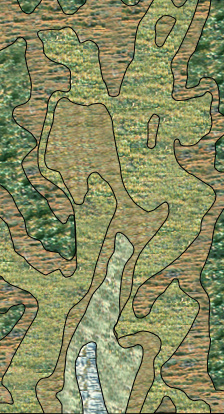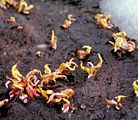Snow
Life under snow
Snow is a typical element of the alpine life zone, particularly at higher latitudes. Some tropical alpine biota experience only short episodic snow cover. Hence, snow is not a general characteristic of the alpine climate, but is one of the key drivers of life in the temperate and subarctic zone.
During cold periods, the presence of snow cover is a positive factor for almost all organisms. It protects the ground, the vegetation and small animals from exposure to freezing temperatures. However, snow cover also limits life activity and shortens the growing season. In the temperate and subarctic zone snow distribution and snow duration shape the alpine vegetation more than any other environmental factor.

- Snow insulates in winter, determines the season length, and stores water and nutrients released during snowmelt.
- The thicker the snow, the less soil is likely to freeze. Roots of alpine vegetation in 10 cm depth may freeze in only one out of four winters because of snow cover.
- For photosynthesis, a 30 cm snow pack is like a black carpet to plants. However, a few penetrating photons may signal daylength and the approach of melting to plants so that many start growing before the snow has disappeared.
- Ice crusts or very dense (compacted) snow can impair gas diffusion, occasionally leading to anoxia in wet soil underneath.

Snowbed patterns and vegetation zones
Convergence of vegetation mosaics and contour lines of snowmelt in spring on steep terrain. Certain species prefer certain snow cover/melt zones.
|
|
Rhododendron ferrugineum |
|
deepest snow cover |
|
|
Vaccinium myrtillus |
|
medium snow cover |
|
|
Vaccinium uliginosum | ||
|
|
Loiseleuria procumbens |
|
poor and/or interrupted snow cover (wind) |
|
|
Alectoria lichen zone | ||
|
|
bare ridge top |

